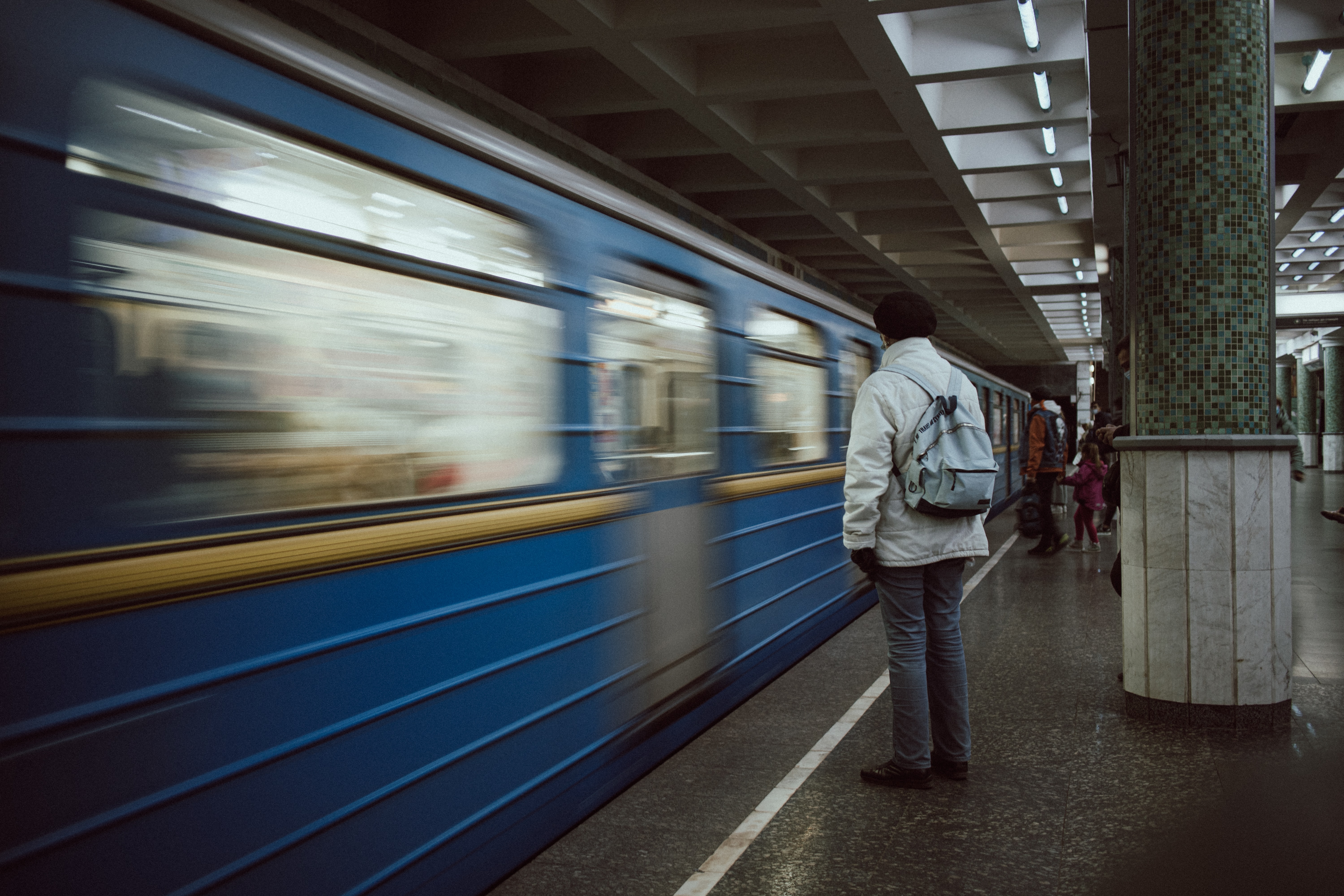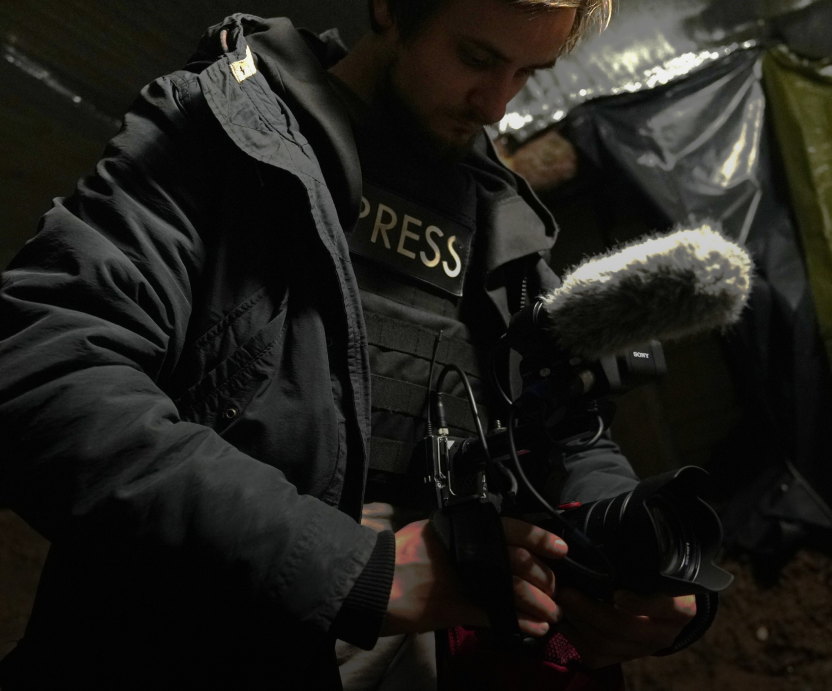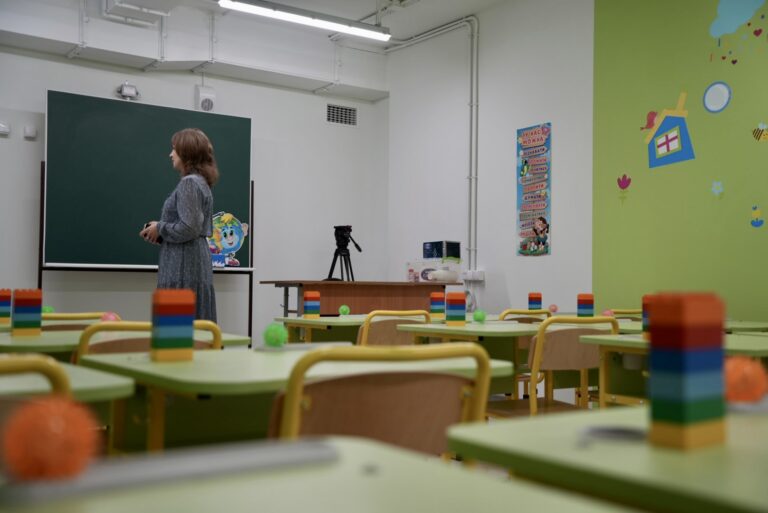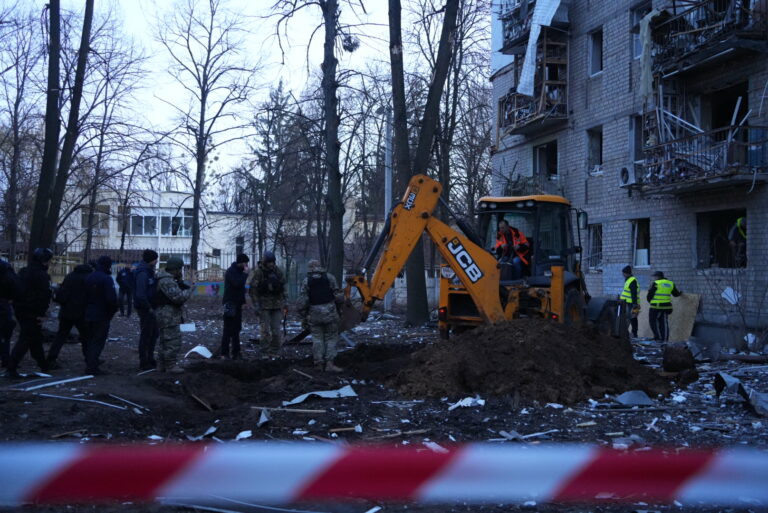Kharkiv metro has been surrounded by urban legends. It is said that the mammoth’s tooth was found during the metro ceremonial establishment. Another myth says about the mushroom farm developed at one of the stations, as the underground climate was perfect for that kind of business.
At last, people talked about the protective function of the metro in Kharkiv. They said the paranoiac Soviet government constructed the underground to be able to withstand the rocket attack. Kharkiv citizens had to test this in 2022 when Russia started the full-scale war against Ukraine, and people were forced to use the underground stations as bomb shelters.
Since May 24, 2022, the Kharkiv metro has resumed operation as a public transport facility. Here we provide practical information about Kharkiv metro stations, timings, and prices, along with the local stories from the underground.
Kharkiv metro map
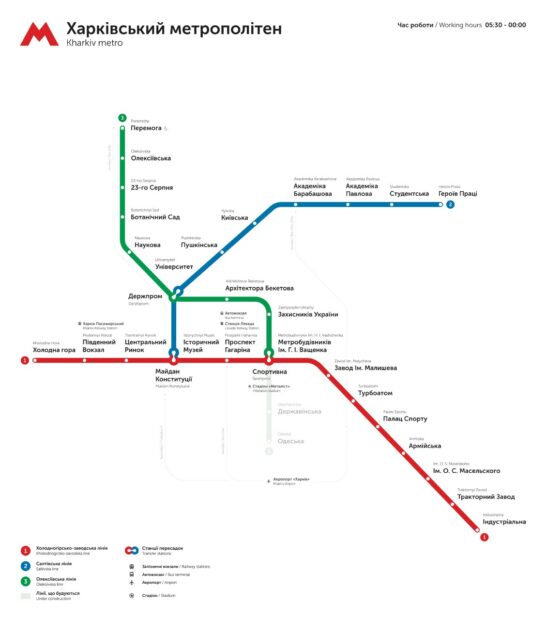
Kharkiv metro system
Metro in Kharkiv consists of three lines and 30 stations.
Kharkiv metro timings: from 5.30 a.m. till 9.30 p.m.
The red Kholodnohirsko–Zavodska Line is the oldest and the longest line in the city metro.
It was built along the so-called ‘central axis’ of the city roughly crossing it from east to west. The route starts in the heavily industrialized area, follows through the important transport hub Prospekt Haharina (Gagarina), and runs through the historical center for two stations, Maidan Konstytutsii (Constitution Square) and Tsentralnyi Rynok (Central Market). Then, it passes through the city’s main railway station at Pivdennyi Vokzal, and a large terminal for suburban buses at Kholodna Hora.
Under normal circumstances, the intervals between trains are 1,5–2 minutes during rush hours, 3–5 minutes in between, and extend up to 15 minutes after 9 p.m. During the summer vacation season from June to August, intervals can be bigger. However, during wartime, the intervals are extended up to 20 minutes and may be changed due to technical delays.
The blue Saltivska Line is historically the second line of the Kharkiv metro. It cuts the city roughly along the northeast-southwest axis starting in the historical city center, following to modern downtown Kharkiv and ending in Heroiv Pratsi station in the Saltivka neighborhood. The line also features Kharkiv metro’s only metro bridge.
Under normal circumstances, the intervals between trains are 3–5 minutes during rush hours and extend up to 20 minutes after 9 pm. During the summer vacation season from June to August, the intervals can be bigger. However, during wartime, the intervals are extended up to 20 minutes and may be changed due to technical delays.
The green Oleksiivska line is historically the third line in the system and the second longest line in the Kharkiv metro. It connects the old city center with the Oleksiivka neighborhood. In August 2016, the newly-opened Peremoha station became the first Kharkiv metro station with disabled access. The line does not have an individual depot, it is served by the same depot as the red Kharkiv metro line. The new depot for the line was under construction before the start of the full-scale Russian invasion.
Traffic on the Oleksiivska line was carried out with the maximum technically possible parity — 12 pairs of trains per hour. During wartime, the intervals between trains are extended up to 20 minutes and may be changed due to technical delays.
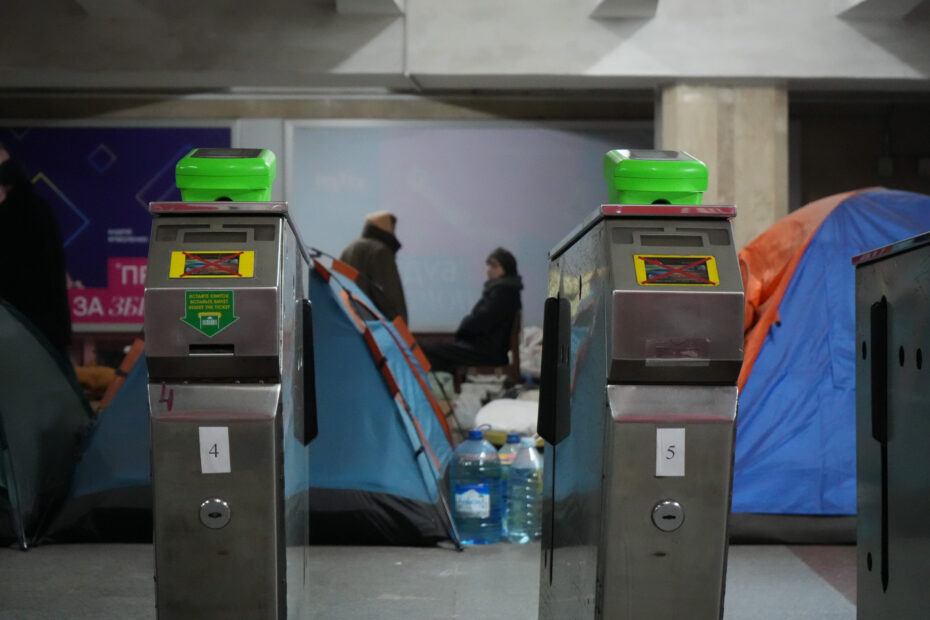
Kharkiv metro card
As of February 2023, during wartime, public transport in Kharkiv is free of charge.
Before the full-scale Russian invasion, a single Kharkiv metro ride cost UAH8 (~$0,22) regardless of destination and number of transits within the metro.
The ride could be paid for either by paper barcode tickets or the contactless Kharkiv metro card E-Ticket. The paper ticket was valid for a single ride, while the Kharkiv metro card was convenient for frequent use. Both paper tickets and the card could be purchased in the machines at the entrance to metro stations. They accepted cash only. E-Ticket cards were also valid on the city tram, trolleybus, and municipal red bus.
One could also pay for the ride by contactless bank card or a smartphone or other NFC-enabled device on blue-colored turnstiles directly.
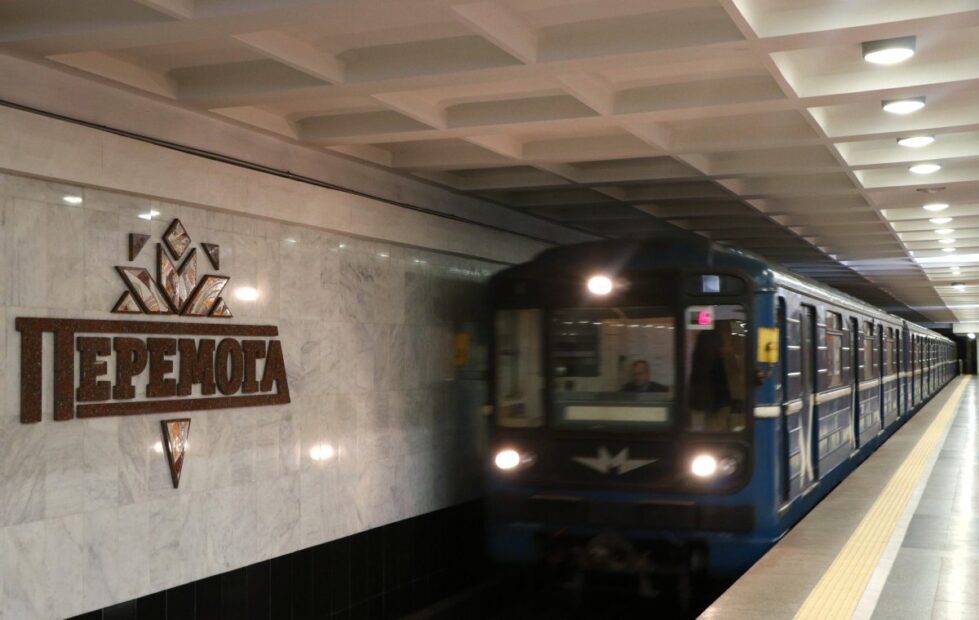
City metro history
Metro in Kharkiv has been operating since 1975. It was the second to be opened in Ukraine after Kyiv.
Initially, the stations were announced only in Russian, as the language was dominant for the republics which were part of the Soviet Union. In 1987, they switched to bilingual announcements, and since 1993 they have been made only in Ukrainian. In 2012, during the European Football Championship in Ukraine, the announcements were made in Ukrainian and English.
All the inscriptions at the stations of the first line were in Ukrainian, partially Russified in the second half of the 1980s, until 1997, when the Ukrainian language was completely restored in the station names and information boards. The inscriptions and station names were duplicated in Latin for the Euro-2012.
It is notable that according to the initial project, Prospekt Haharina station was to be called “Levada” (from Ukrainian “field” or “garden”) and designed in Ukrainian ethnic style. The design corresponded to the name of the station and included Ukrainian folk art elements and original paintings. The walls of Levada station were to be decorated with mosaics depicting Ukrainian field flowers and herbs created by the artist from Poltava.
However, the Kharkiv communist party leadership did not approve the idea, and the whole concept was changed not long before the opening. Eventually, the station was named after Yurii Gagarin, a Soviet cosmonaut.
Since Ukraine gained independence in 1991, some Kharkiv metro stations have been renamed as part of the decommunization campaign. So, Radianska (“Soviet”) station opened in 1975, and in 2015 it was renamed Constitution Square.
Subway in Kharkiv during the Russian invasion
With the start of the Russian full-scale invasion of Ukraine on Feb. 24, the Kharkiv metro became a bomb shelter. Thousands of citizens lived underground for months. They have arranged temporary homes and routines there, teachers conducted lessons for schoolchildren, and volunteers brought the supplies. Moreover, Kharkiv Puppet theater performed for the kids in the subway, and Aza Nizi Maza art studio worked and helped children to stay balanced through art. Later the pictures created in the Kharkiv metro were exhibited in Lithuania and Paris.
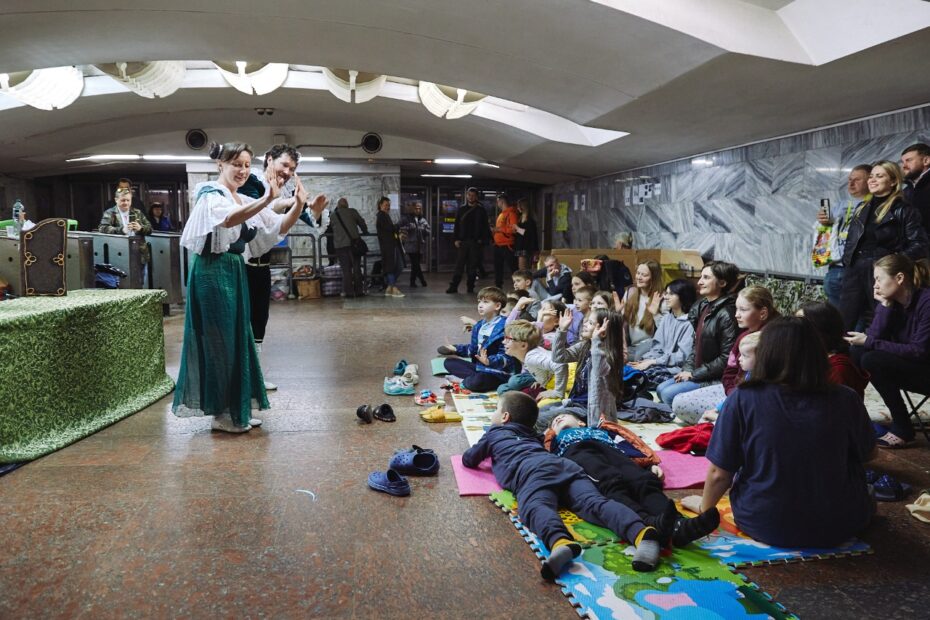
Some citizens walked through the subway tunnels to get to their relatives` places or the railway station as it was dangerous to walk on the street due to the constant shelling.
In May 2022, the Kharkiv metro resumed operation as public transport after three months of functioning as a shelter. Part of the Kharkiv metro cash and carry shops opened too. However, some metro inhabitants are afraid to return to their houses and remain underground.
Since the counteroffensive of the Ukrainian army in Kharkiv Oblast, the city has been gradually getting back to life. As it is still dangerous to conduct outdoor city events, the Kharkiv metro has become a shelter for cultural life. In September, Kharkiv Pride was held at the underground stations. Moreover, the main Christmas tree of the city and all the New Year celebrations took place in the Kharkiv metro.

For Kharkiv citizens, the subway has become a home and shelter, either literal or metaphorical. Those who have survived in the wartime city can hardly ever again consider the Kharkiv metro as an ordinary transportation system.
The underground preserves the city’s history better than any museum. And maybe one day, some of these stories will be transformed into the new urban legends of the peaceful, flourishing, and free Kharkiv.

